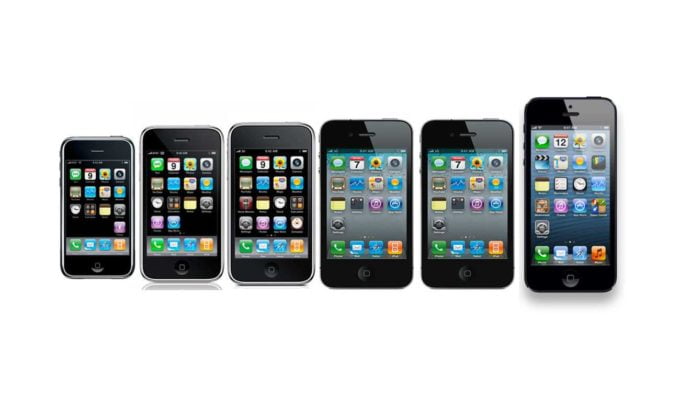Apple iphone
Many people have watched in awe as the apple iPhone has gone from strength to strength. Apple launch new developments at regular increments but there is still considerable interest in its past and how each model is a more exciting offering than the last in the history of Apple iPhone. Upgrading from one model to the next has become a ritual for many fans so we’ve decided to take a look back at the history of Apple iPhone.
History of Apple iPhone
The Beginning
The first iPhone went on sale back in 2007 and along with the fashion; the phone has changed dramatically since back. The iPhone is now one of the highest selling mobile phones on the market and Apple keep producing upgraded models which are exactly to the specification people want.
The original iPhone was revolutionary, it had the most user-friend touch screen that anyone had ever seen and was so much more than a mobile phone. It was a computer and a mobile phone rolled into one and the product had an operating system the likes of which had never been seen.
At this point phones were becoming more of an accessory than a need and every handset company was campaigning to be the best, to have more value than the rest. Most mobiles came with cameras and the ability to personalize ringtones, but few had the graphics or the application management that the iPhone had.
Despite the first iPhone being costly, the sales rocketed with figures suggesting 270,000 units were sold in the first two days in the history of Apple iPhone.
Development
The follow on from this was the iPhone 3G in 2008, which was a thinner, more protected and lighter product. It was also cheaper and the storage capacity had increased so there was even more on offer to buyers. The 3G also introduced its users to the 3G wireless network, which previous iPhone users didn’t have access too. Again the 3G proved to be a success due to its ability to run third-party apps and more advanced camera.
From the 3G, Apple released a similar, yet updated version called the 3GS, which had a faster processor, more ram and a higher quality camera which could record videos as well as take photos. The S in this generations name was implied as speed, and the company’s main aim was to provide a faster device which was better suited to the users’ needs.
The biggest design change came in 2010 when the iPhone 4 was announced. The iPhone went from a chunkier curved back phone to a sleek flat backed phone. It was thinner, lightweight and the resolution on the screen was better. The camera was updated again going up to a 5mp camera with the ability to record 720p videos and a second camera was introduced to the front.
Following on from the 4 came the 4S which provided a better battery life than its predecessor and provide the user with Siri, a voice recognition service which can be used to send and receive text messages, look for data, set timers and reminders and many more.
New Advancement
In 2012 Apple released their latest and most technologically advance iPhone, which was longer and thinner than all of the previous generations, coming in at 20% lighter than the 4S. The battery life had improved and the increase in screen size made the experience more enjoyable, allowing for the entire screen to be used. Five million iPhone 5s were sold in its opening weekend.
With the advances in technology throughout each generation and the increased popularity of the phones it is clear that Apple will produce something big with their next generation of iPhone.

